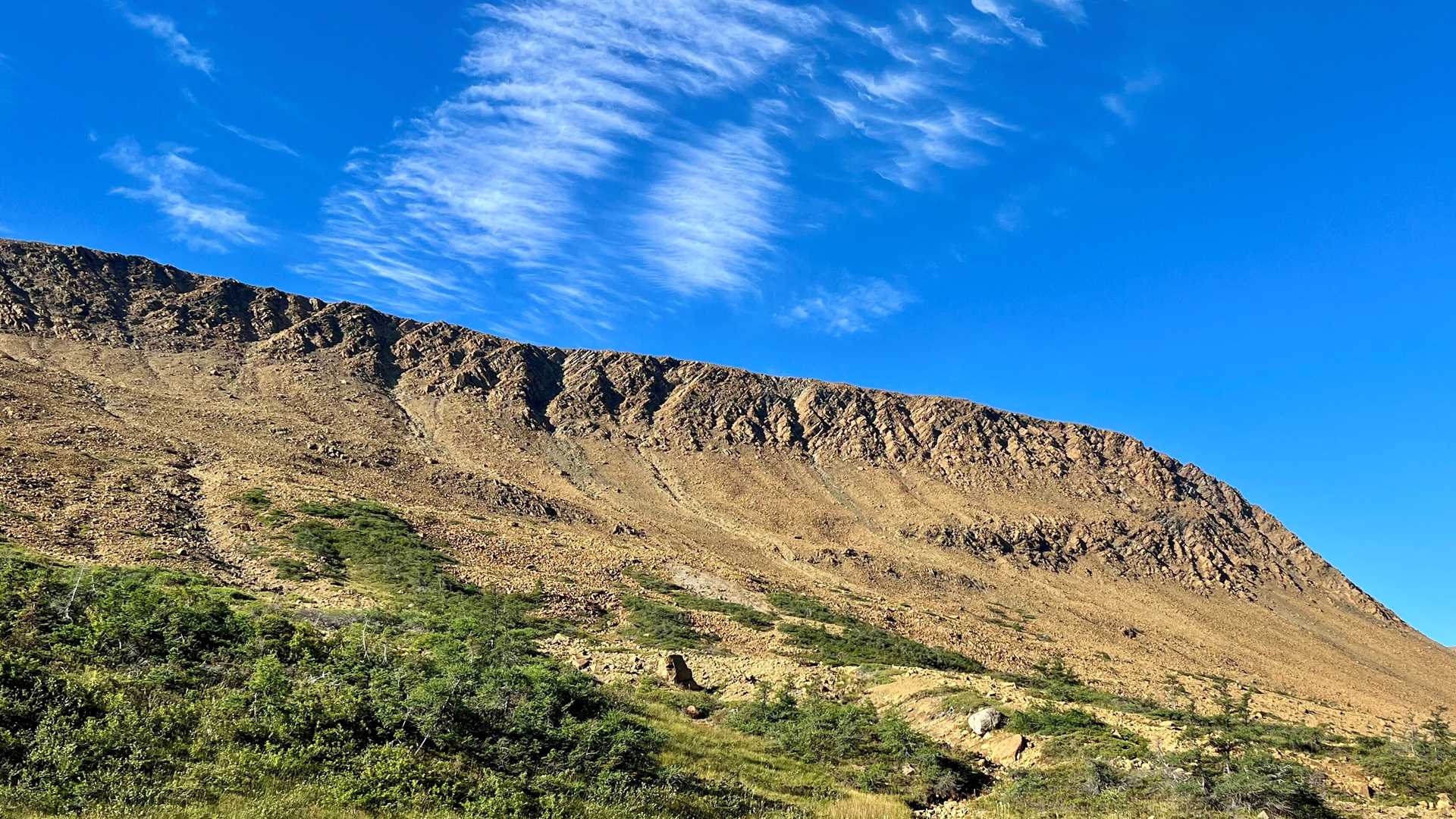Our luck with the weather held for another day, and we woke at Woody Point to bright sunshine and the promise of temperatures in the mid-70s. An intrepid dozen or so guests departed with two naturalists for a strenuous hike to the top of the Tablelands while the rest boarded buses for a drive to the top followed by a short hike with a Parks Canada ranger and, of course, some Lindblad naturalists. The morning’s centerpiece was the mantle section of the Bay of Islands ophiolite complex, a cross-section through a mid-oceanic spreading ridge now thrust up onto the continent where it can be observed. The rocks have undergone metamorphic changes, converting their original olivine to serpentine with a distinctive surface texture. This process releases trace heavy metals in the rocks, which render the soils toxic to most plant life apart from carnivorous Newfoundland pitcher plants, the provincial plant of Newfoundland and Labrador. During lunch, the ship repositioned across the bay to Norris Point for afternoon activities. Half the group visited the Bonne Bay Aquarium, affiliated with Memorial University in St. John’s, while others took a short bus ride to Lobster Cove Head Lighthouse.
9/29/2024
Read
National Geographic Explorer
Terra Nova, Newfoundland
We dropped anchor deep into one of the fingers of Bonavista Bay to explore Terra Nova National Park, Canada’s most eastern parks, whose name is derived from the Latin for Newfoundland. The highly popular park abounds with forested hills, bogs, ponds, and wetlands all inhabited by a plethora of small and large mammals, migratory birds, and of course, plants. Remains of the ancient Appalachian Mountains provide a textbook of geological features, and the accessible seashore offers much for intertidal enthusiasts. In overcast and cool weather, we had the usual offerings of hikes: a casual loop emphasizing plant interpretation, an intermediate hike along the shore and forest, and a strenuous hike through the forest and over innumerable roots designed to challenge foot dexterity and agility. We returned to National Geographic Explorer for lunch, then back to the park for independent exploration and to hear a spirited performance by Rum Ragged, an award-winning Canadian folk music group from Newfoundland and Labrador. The quartet’s use of bouzouki, fiddle, bodhran, banjo, guitar, button accordion, combined with striking harmonies and storytelling, created a truly unique auditory and visual experience. The evening (and voyage) concluded with the traditional captain’s dinner and guest slideshow. Future National Geographic photographers, perhaps?







